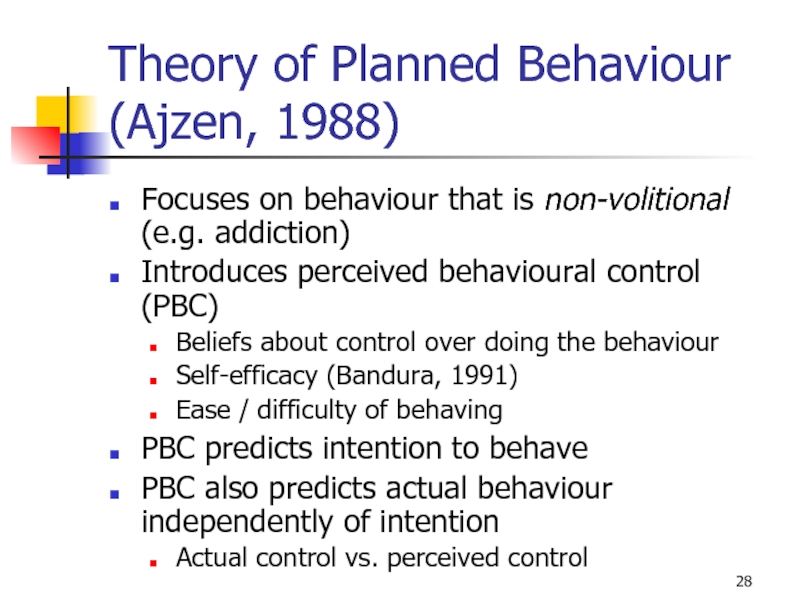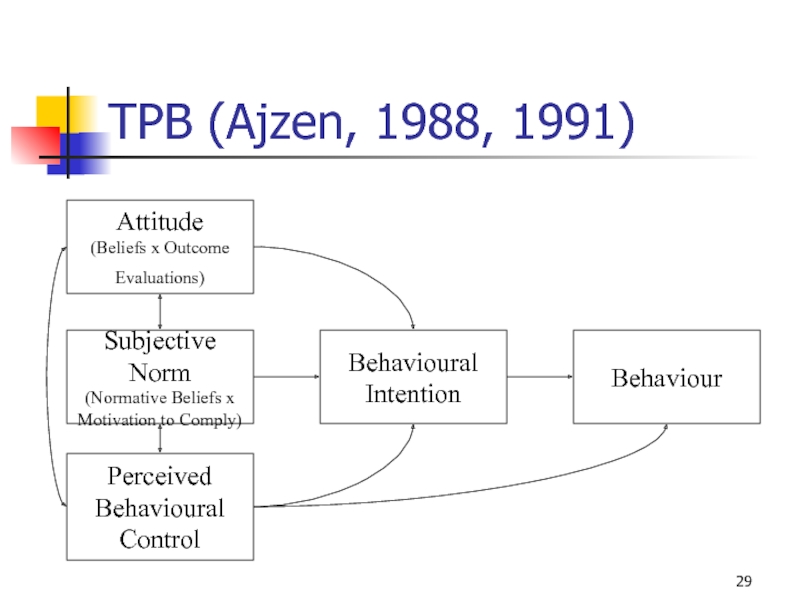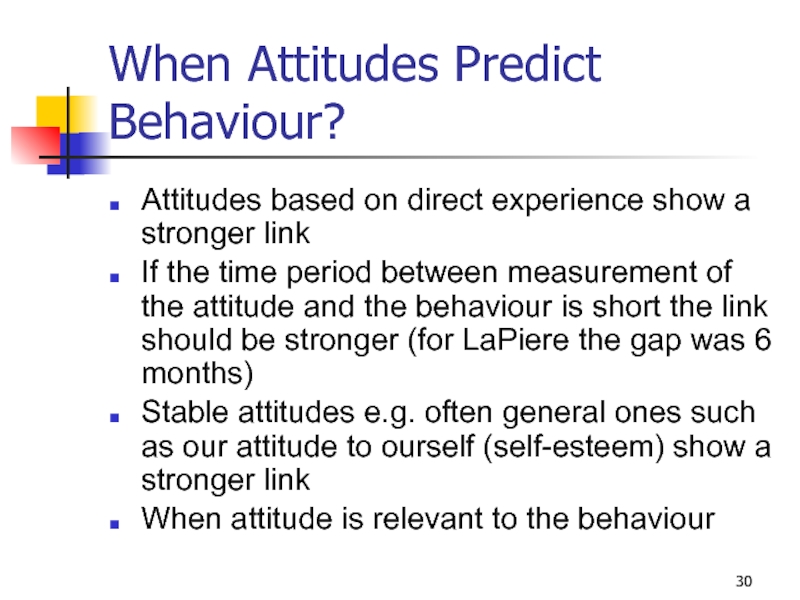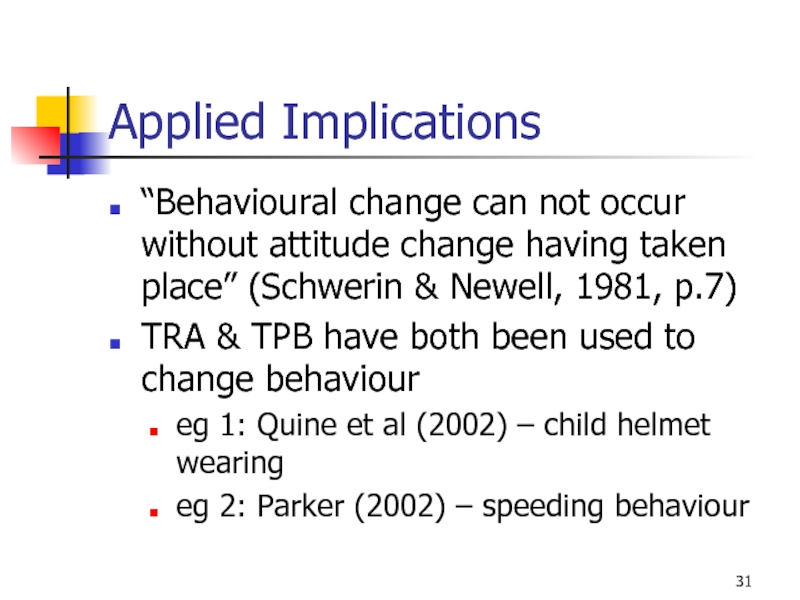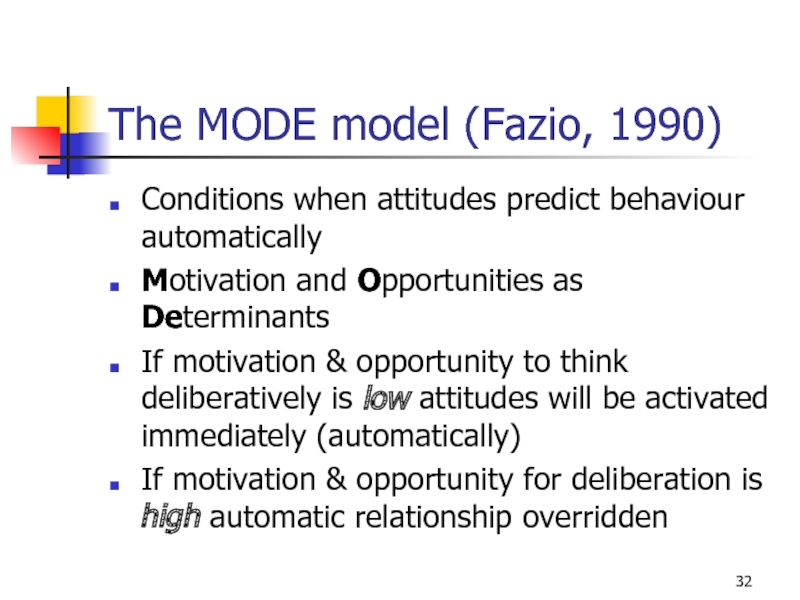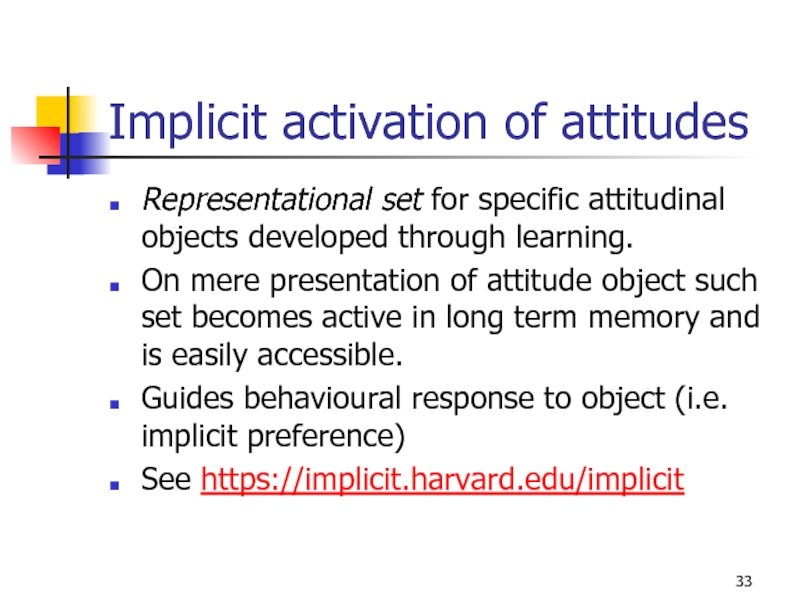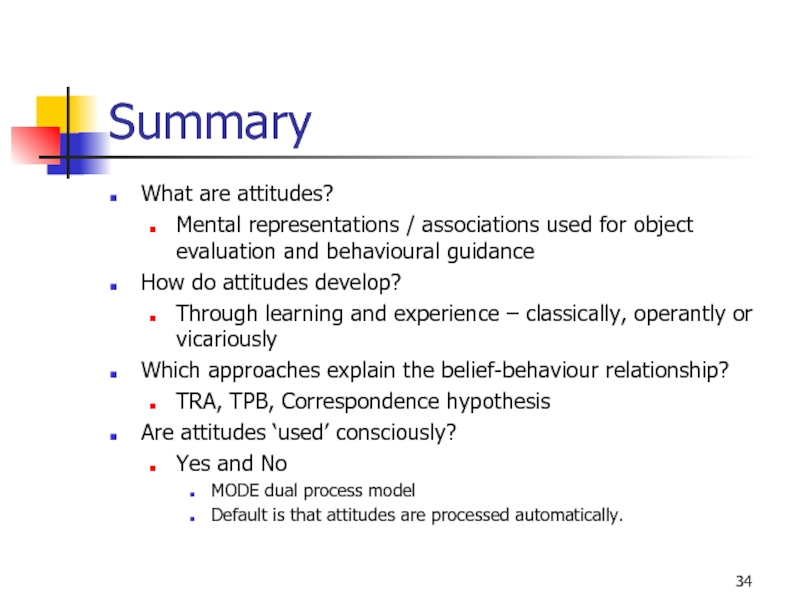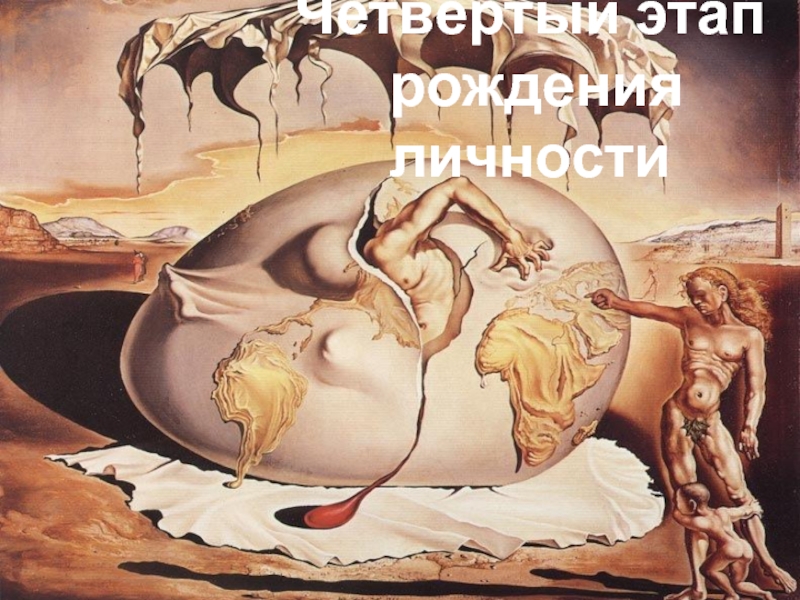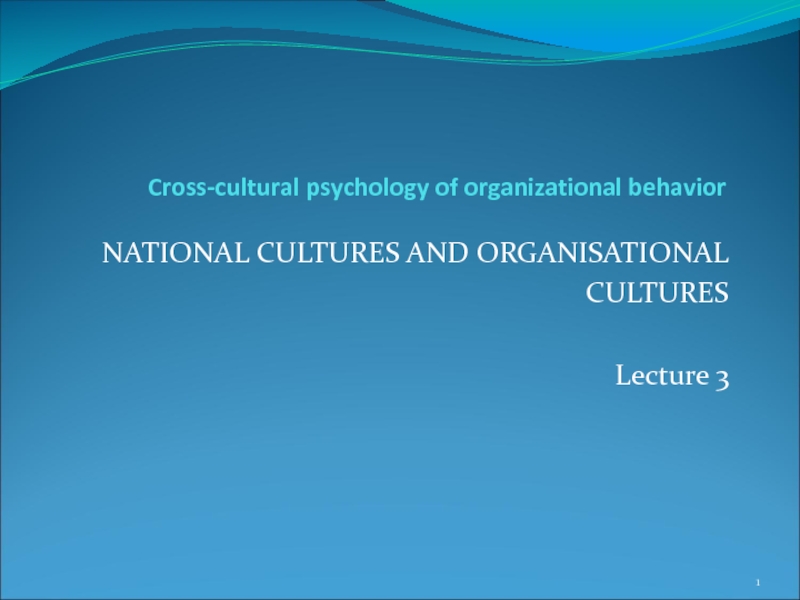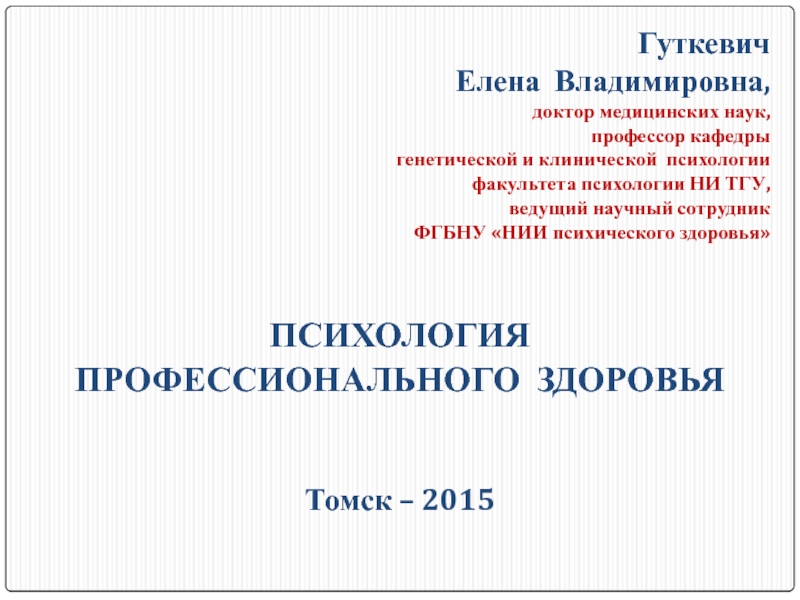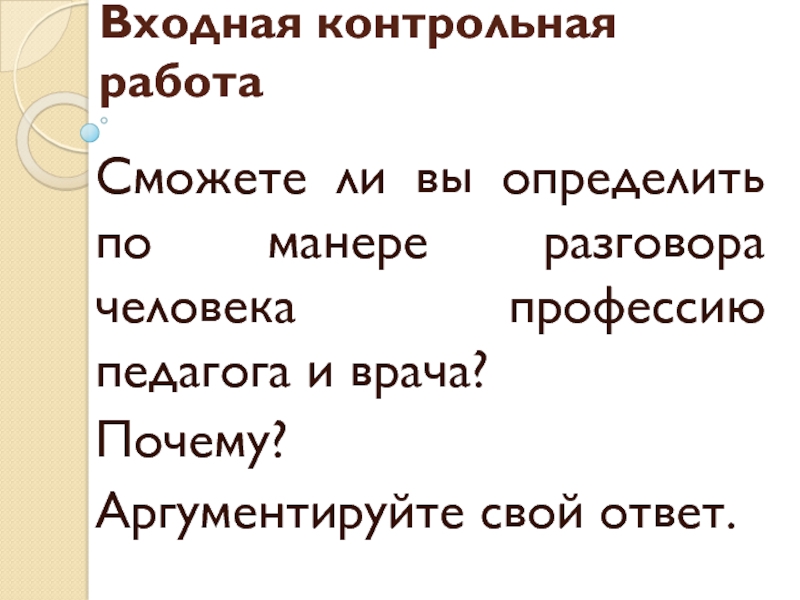- Главная
- Разное
- Дизайн
- Бизнес и предпринимательство
- Аналитика
- Образование
- Развлечения
- Красота и здоровье
- Финансы
- Государство
- Путешествия
- Спорт
- Недвижимость
- Армия
- Графика
- Культурология
- Еда и кулинария
- Лингвистика
- Английский язык
- Астрономия
- Алгебра
- Биология
- География
- Детские презентации
- Информатика
- История
- Литература
- Маркетинг
- Математика
- Медицина
- Менеджмент
- Музыка
- МХК
- Немецкий язык
- ОБЖ
- Обществознание
- Окружающий мир
- Педагогика
- Русский язык
- Технология
- Физика
- Философия
- Химия
- Шаблоны, картинки для презентаций
- Экология
- Экономика
- Юриспруденция
Lecture: Beliefs, Attitudes and Behaviour презентация
Содержание
- 1. Lecture: Beliefs, Attitudes and Behaviour
- 2. Learning Outcomes After the session and appropriate
- 3. Lecture Outline Definitions and conceptual distinctions components
- 4. Attitudes “......the most distinctive and indepensible concept
- 5. Importance of Attitudes Psychologists aim to explain/predict
- 6. Attitudes: Approaches Main approaches to the definition
- 7. Definitions “Attitudes are enduring mental representations of
- 8. Multidimensional Definition “.....a psychological tendency that is
- 9. Multidimensional Approach Three-component model. Cognitive component -
- 10. Multidimensional Approach Observable IV variable Intervening variables
- 11. Unidimensional Approach Lack of consistency between cognition
- 12. Unidimensional Definition “.....the term attitude should
- 13. Attitude as an Evaluative Response to Social Object Adpated from: Ajzen (1988)
- 14. Attitude Formation Attitudes are learned by same
- 15. Conditioning and Attitudes Staats & Staats (1958)
- 16. Functions of Attitudes Guiding information processing Cognitive
- 17. Attitudes and Behaviour Guiding behavioural decisions. Multidimensional
- 18. Attitudes and Behaviour Explanation for low correspondence.
- 19. Correspondence H1: Example Davidson & Jaccard (1979)
- 20. Expectancy-Value Approaches Expectancies about outcomes related to
- 21. TRA (Fisbein & Ajzen, 1977) How beliefs/attitudes
- 22. TRA Expectancy-value components for outcomes specific beliefs
- 23. TRA (Fishbein & Ajzen, 1977) Attitude (Beliefs
- 24. TRA: Evaluation (1) Intention predict by more
- 25. TRA: Evaluation (2) Influence of past behaviour
- 26. Bentler & Speckart (1979) Behaviour Attitude Subjective
- 27. Triandis’ (1977, 1980) Specified habit as part
- 28. Theory of Planned Behaviour (Ajzen, 1988) Focuses
- 29. TPB (Ajzen, 1988, 1991) Attitude (Beliefs x
- 30. When Attitudes Predict Behaviour? Attitudes based on
- 31. Applied Implications “Behavioural change can not occur
- 32. The MODE model (Fazio, 1990) Conditions when
- 33. Implicit activation of attitudes Representational set for
- 34. Summary What are attitudes? Mental representations /
Слайд 2Learning Outcomes
After the session and appropriate reading, you should be able
Demonstrate an understanding of how the belief/attitude-behaviour relationship has been conceptualised by social psychologists.
Have an understanding of how attitudes develop.
Слайд 3Lecture Outline
Definitions and conceptual distinctions
components of attitudes
Development of attitudes
Functions / purpose
motivation, information processing, consistency models
Attitude-behaviour relationship – expectancy value approaches
Слайд 4Attitudes
“......the most distinctive and indepensible concept in.......psychology” (Allport, 1954, p43).
True for
Слайд 5Importance of Attitudes
Psychologists aim to explain/predict behaviour.
Attitudes influence behaviour.
Behaviour influences attitudes.
Attitudes
Changing behaviour may be dependent upon changing attitudes.
Слайд 6Attitudes: Approaches
Main approaches to the definition of attitudes.
Multidimensional definition (Rosenberg &
Unidimensional definition (Petty & Cacioppo, 1981)
Слайд 7Definitions
“Attitudes are enduring mental representations of various features of the social
“Attitude is a psychological tendency that is expressed by evaluating a particular entity with some degree of favour or disfavour” (Eagly & Chaiken, 1993, p. 1)
Слайд 8Multidimensional Definition
“.....a psychological tendency that is expressed by evaluating a particular
Слайд 9Multidimensional Approach
Three-component model.
Cognitive component - thoughts, beliefs, opinions about attitude object.
Affective
Conative / behavioural component - actions, behaviours with regards the attitude object.
Слайд 10Multidimensional Approach
Observable
IV variable
Intervening
variables
Observable DVs
Stimuli that
denote attitude
eg persons
Attitude
SNS responses
(GSR)
Verbal indices
Verbal belief
Statements
RTs
Overt actions
Verbal behaviour
statements
Source: adapted from Eagly & Chaiken (1993), p. 10
Cognition
Affect
Behaviour
Слайд 11Unidimensional Approach
Lack of consistency between cognition and behaviour with affect.
Affect only
Distinction between:
beliefs about an object
feelings (i.e. Attitude) about the object
behavioural-intention - attitude-relevant action
Слайд 12Unidimensional Definition
“.....the term attitude should be used to refer to a
Слайд 14Attitude Formation
Attitudes are learned by same principles as other learned responses
classical conditioning (Staats & Staats, 1958; Berkowitz & Knurek, 1969)
operant / instrumental conditioning (Verplanck, 1955; Hildum & Brown, 1965)
social learning (Bandura, 1986)
Слайд 15Conditioning and Attitudes
Staats & Staats (1958)
Positive/negative Nationality
words (UCS) + (CS)
= Ratings of pleasantness
(CR)
Слайд 16Functions of Attitudes
Guiding information processing
Cognitive consistency theories (Heider, 1946; Frey &
Dissonance theory (Festinger, 1957; Festinger & Carlsmith, 1959)
A pessimistic account…….
‘The only completely consistent people are dead‘ (Aldous Huxley, novelist, 1894-1963).
Слайд 17Attitudes and Behaviour
Guiding behavioural decisions.
Multidimensional definition:
Relationship between cognitive and affective part
Low correlation between attitude and behaviour (Sutton, 1998)
Wicker (1969) – .00 to .30 range in att-behaviour correlation
e.g. LaPiere (1934) - Chinese travelling study (first of it’s kind!)
Слайд 18Attitudes and Behaviour
Explanation for low correspondence.
Do attitudes predict behaviour?
Question too global
When are attitudes and behaviour correlated?
Which processes influence the association?
Correspondence hypothesis (Ajzen & Fishbein, 1977)
Action, target, context, time
Best correlation when attitude and behaviour are compatible in action, target, context & time
Слайд 20Expectancy-Value Approaches
Expectancies about outcomes related to a behaviour plus value (valence)
Decision making models
Subjective-expectancy-utility Theory (Edwards, 1977)
Theory of Reasoned Action (Fishbein & Ajzen, 1977)
Theory of Planned Behaviour (Ajzen, 1988, 1991)
Слайд 21TRA (Fisbein & Ajzen, 1977)
How beliefs/attitudes have their effects on behaviour.
Behaviour
Immediate antecedent of behaviour is intention to behave
Form an intention (via past experience of behaving in similar way) from previously developed behavioural beliefs (attitude) and normative belief-based factors
Слайд 22TRA
Expectancy-value components for outcomes specific beliefs and normative beliefs
Multiplicative analysis undertaken
Positive beliefs about behaviour and increased perceived normative beliefs predict increased intention to behave in that way which in turn predict actual observed behaviour
Слайд 23TRA (Fishbein & Ajzen, 1977)
Attitude
(Beliefs x Outcome
Evaluations)
Subjective Norm
(Normative Beliefs x
Motivation
Behavioural
Intention
Behaviour
Слайд 24TRA: Evaluation (1)
Intention predict by more factors than TRA assumes
Perceived moral
Anticipated regret (Richard et al, 1995)
Self-identity (Biddle et al, 1987)
Behaviour has become part of self-identities
Becomes stronger as behaviour is repeated
Слайд 25TRA: Evaluation (2)
Influence of past behaviour on present behaviour
Direct effect –
Indirect effect – via intention
Direct & indirect effects
Habit formation & development:
Bentler & Speckart (1979, 1981)
Triandis (1980)
Слайд 26Bentler & Speckart (1979)
Behaviour
Attitude
Subjective
norm
Intention
Behaviour
Automatic
cognition
effects
Слайд 27Triandis’ (1977, 1980)
Specified habit as part of the intention-behaviour relationship
“[S]ituation specific
Number of times act performed in past
Routine through repetition (learning)
No conscious decision to act required
Behaviour joint outcome of behavioural intention and habit
Слайд 28Theory of Planned Behaviour (Ajzen, 1988)
Focuses on behaviour that is non-volitional
Introduces perceived behavioural control (PBC)
Beliefs about control over doing the behaviour
Self-efficacy (Bandura, 1991)
Ease / difficulty of behaving
PBC predicts intention to behave
PBC also predicts actual behaviour independently of intention
Actual control vs. perceived control
Слайд 29TPB (Ajzen, 1988, 1991)
Attitude
(Beliefs x Outcome
Evaluations)
Subjective Norm
(Normative Beliefs x
Motivation to
Perceived
Behavioural
Control
Behavioural
Intention
Behaviour
Слайд 30When Attitudes Predict Behaviour?
Attitudes based on direct experience show a stronger
If the time period between measurement of the attitude and the behaviour is short the link should be stronger (for LaPiere the gap was 6 months)
Stable attitudes e.g. often general ones such as our attitude to ourself (self-esteem) show a stronger link
When attitude is relevant to the behaviour
Слайд 31Applied Implications
“Behavioural change can not occur without attitude change having taken
TRA & TPB have both been used to change behaviour
eg 1: Quine et al (2002) – child helmet wearing
eg 2: Parker (2002) – speeding behaviour
Слайд 32The MODE model (Fazio, 1990)
Conditions when attitudes predict behaviour automatically
Motivation and
If motivation & opportunity to think deliberatively is low attitudes will be activated immediately (automatically)
If motivation & opportunity for deliberation is high automatic relationship overridden
Слайд 33Implicit activation of attitudes
Representational set for specific attitudinal objects developed through
On mere presentation of attitude object such set becomes active in long term memory and is easily accessible.
Guides behavioural response to object (i.e. implicit preference)
See https://implicit.harvard.edu/implicit
Слайд 34Summary
What are attitudes?
Mental representations / associations used for object evaluation and
How do attitudes develop?
Through learning and experience – classically, operantly or vicariously
Which approaches explain the belief-behaviour relationship?
TRA, TPB, Correspondence hypothesis
Are attitudes ‘used’ consciously?
Yes and No
MODE dual process model
Default is that attitudes are processed automatically.
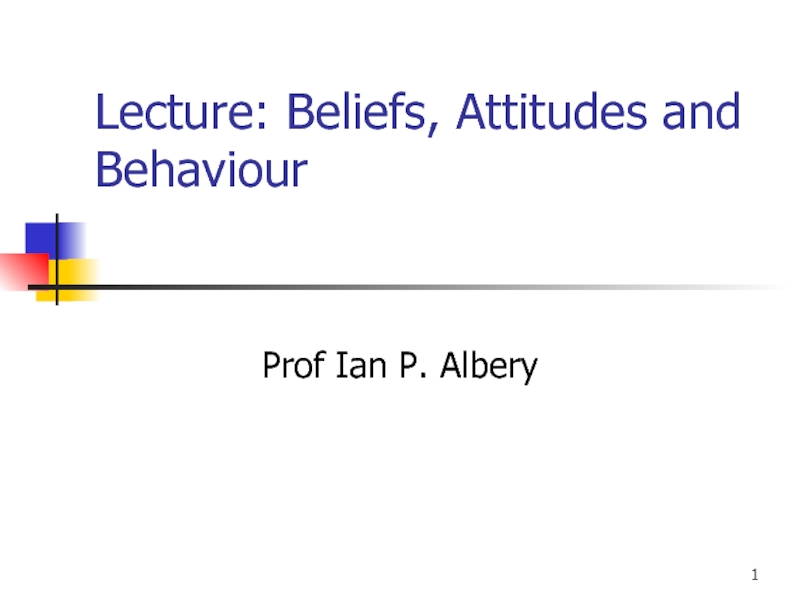
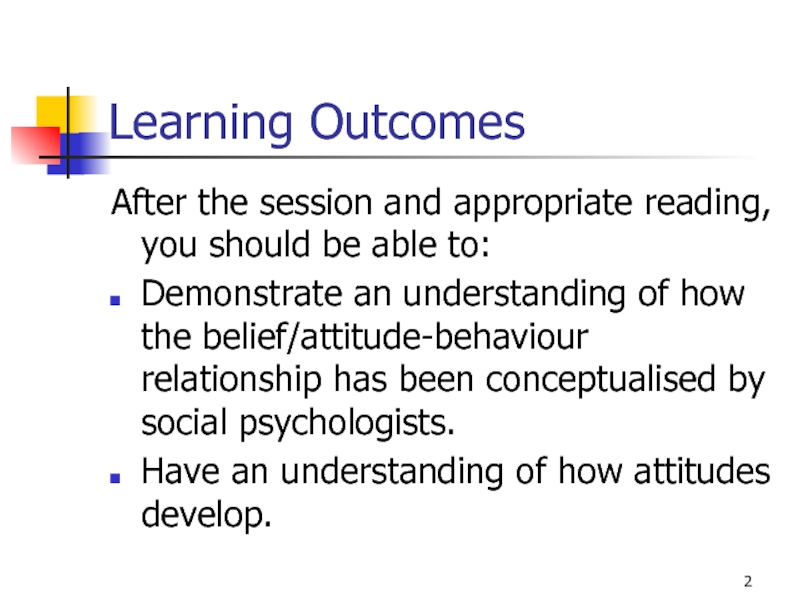
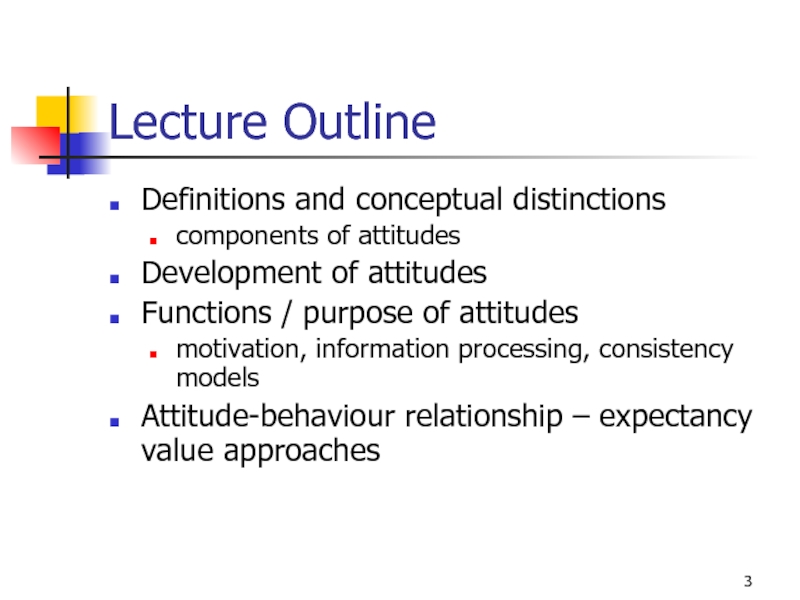
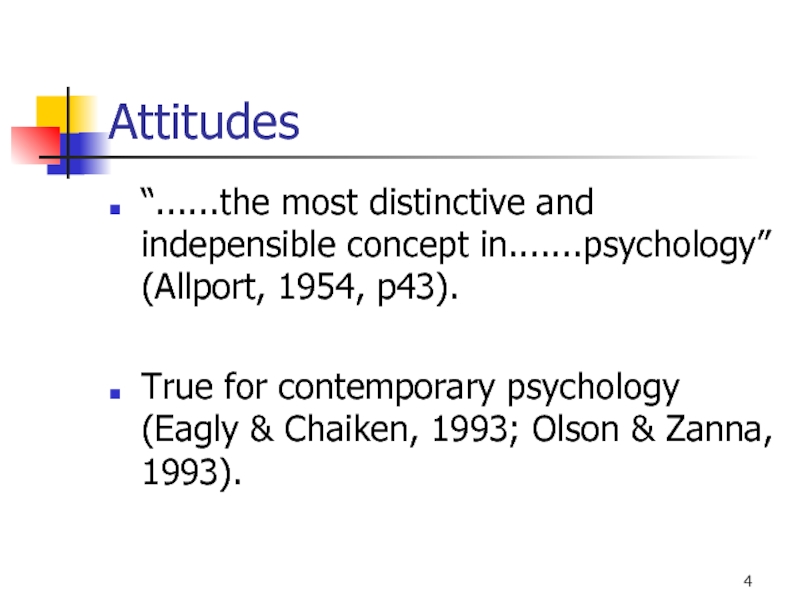
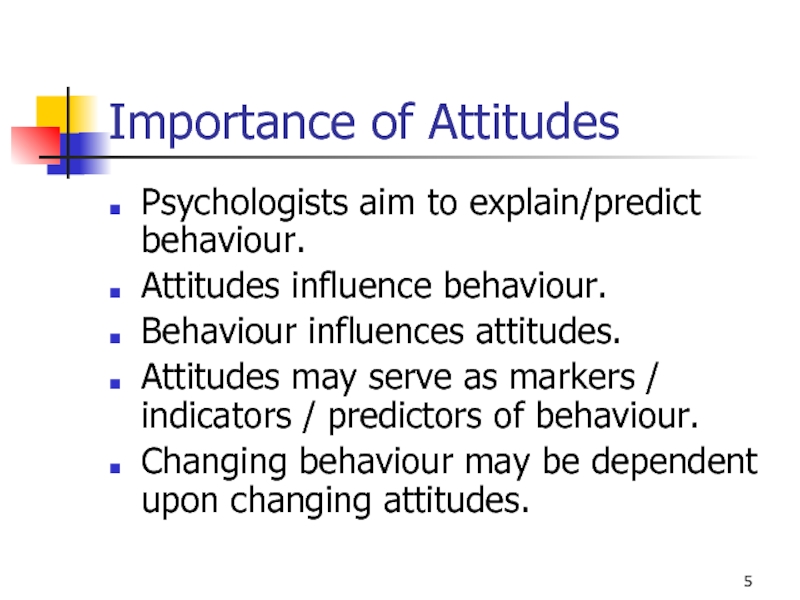
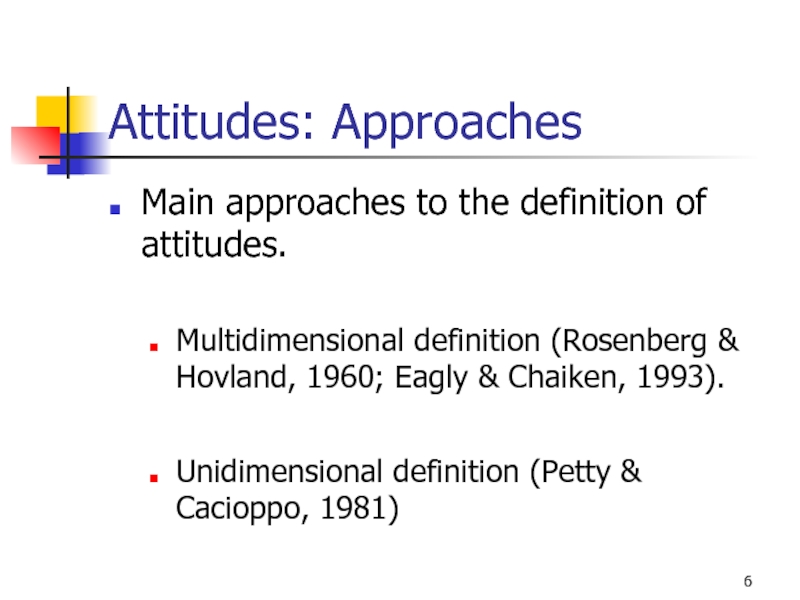
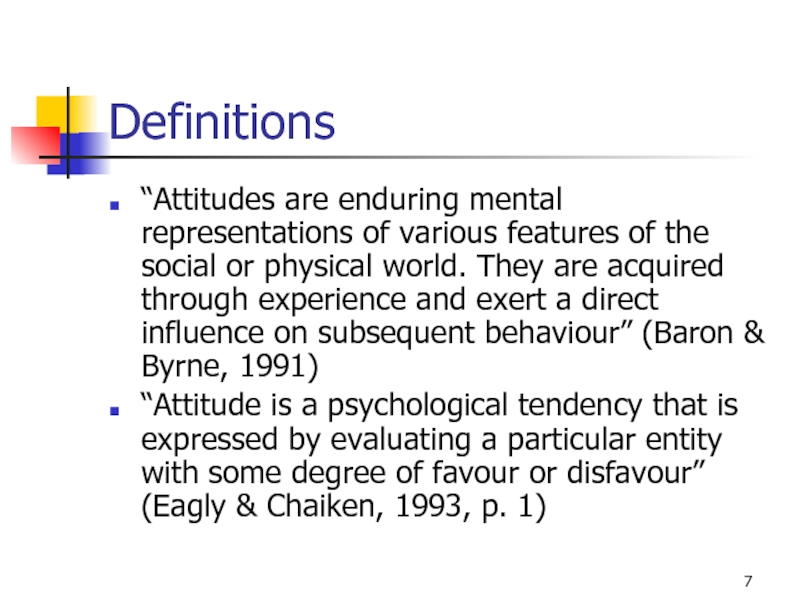
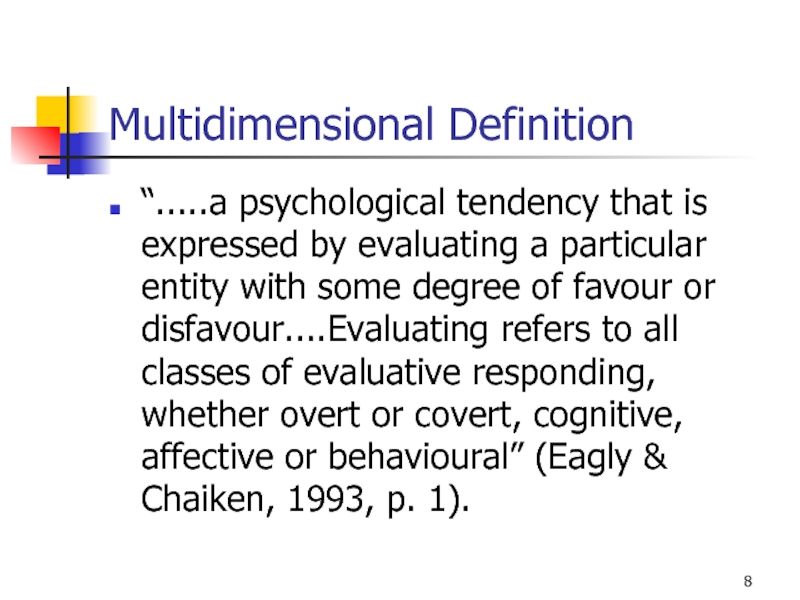
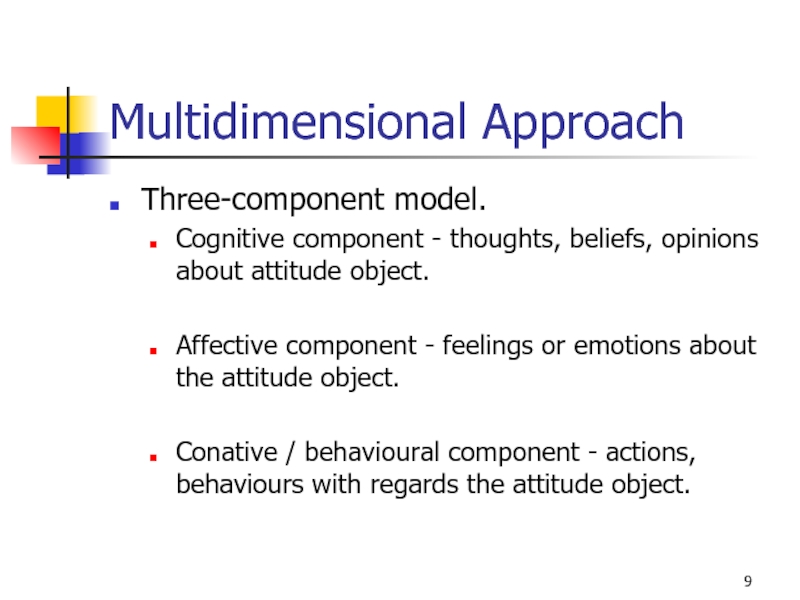
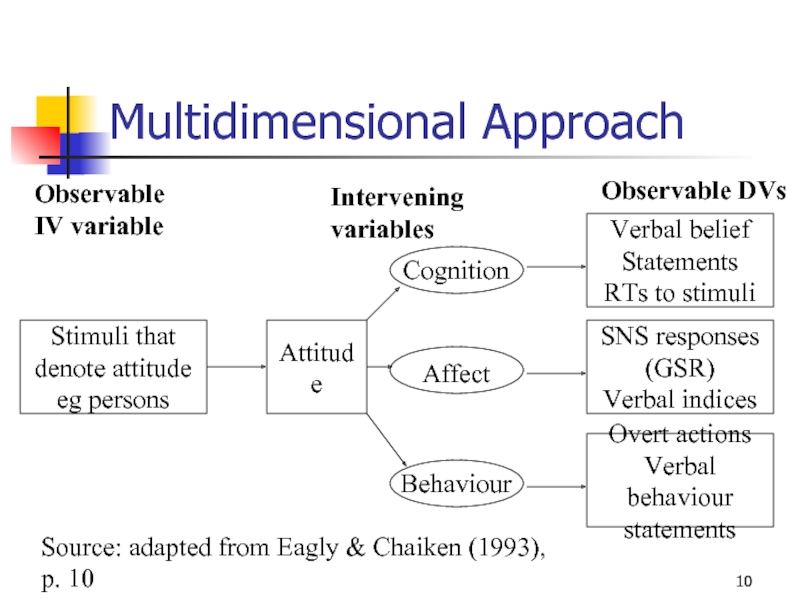
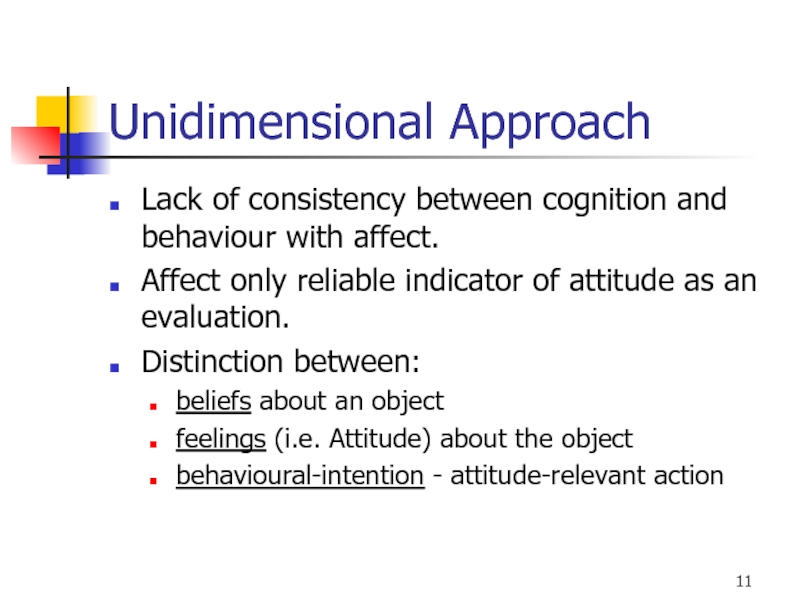
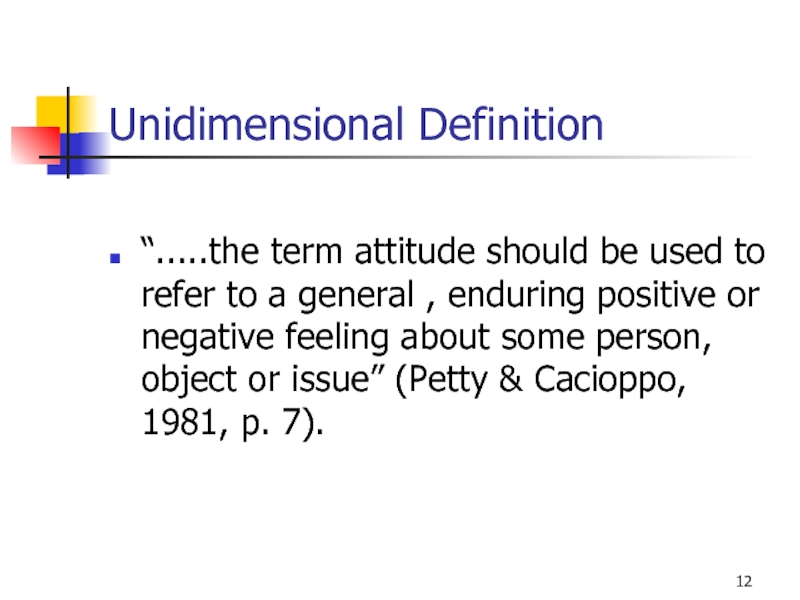
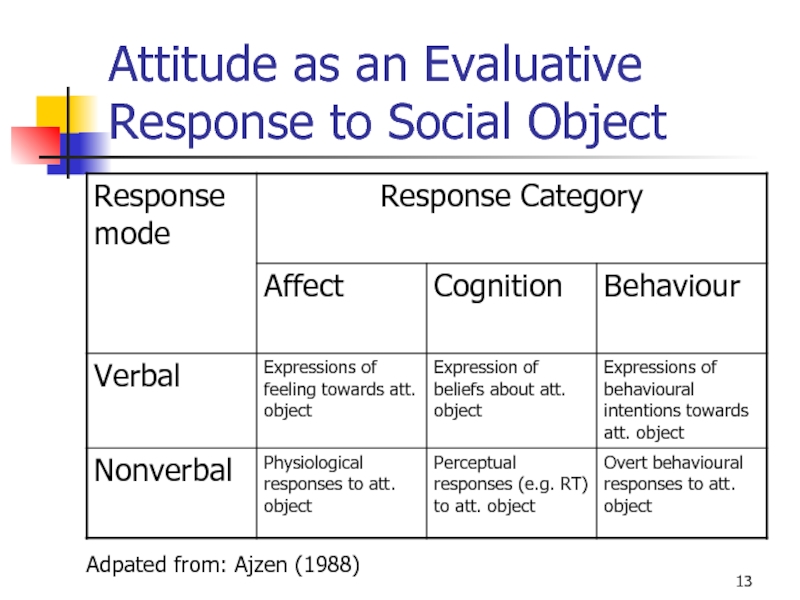
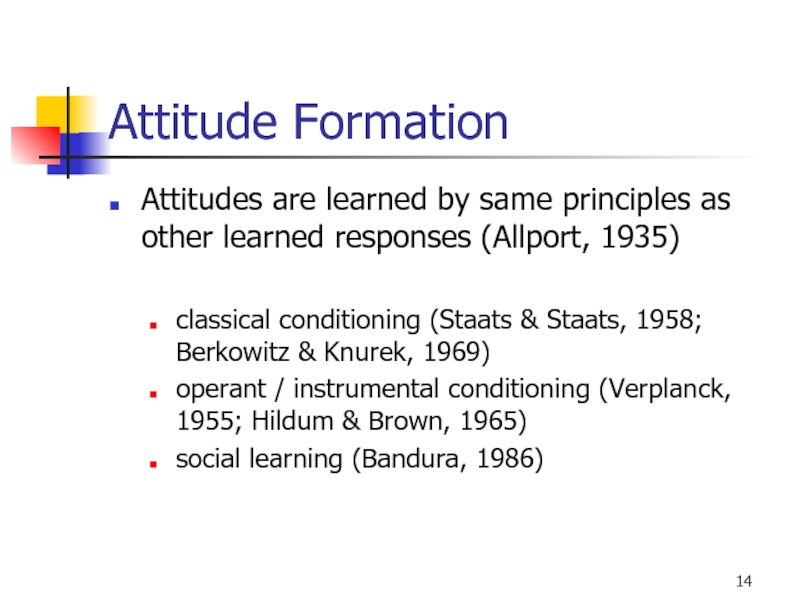
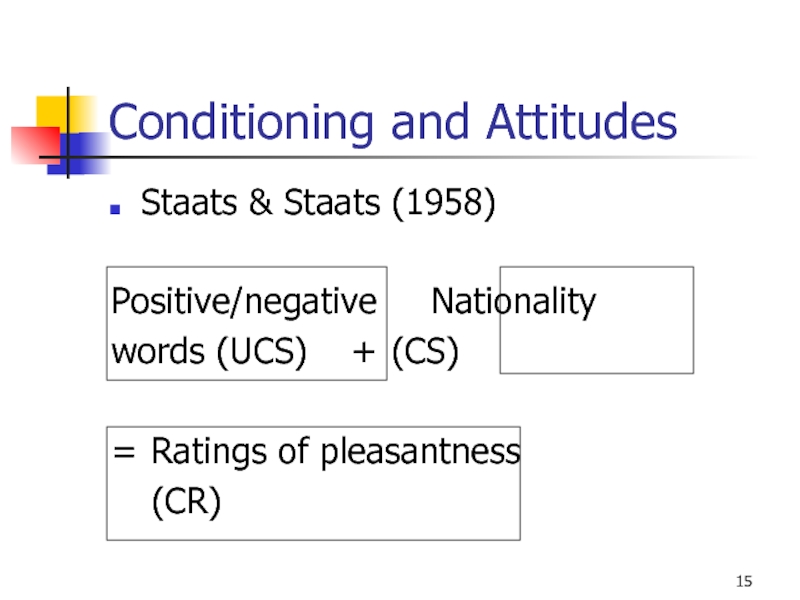
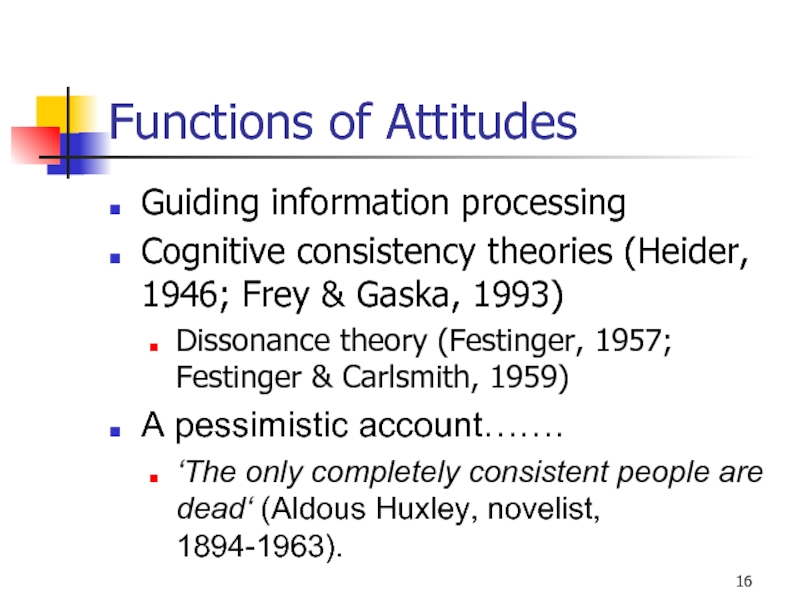
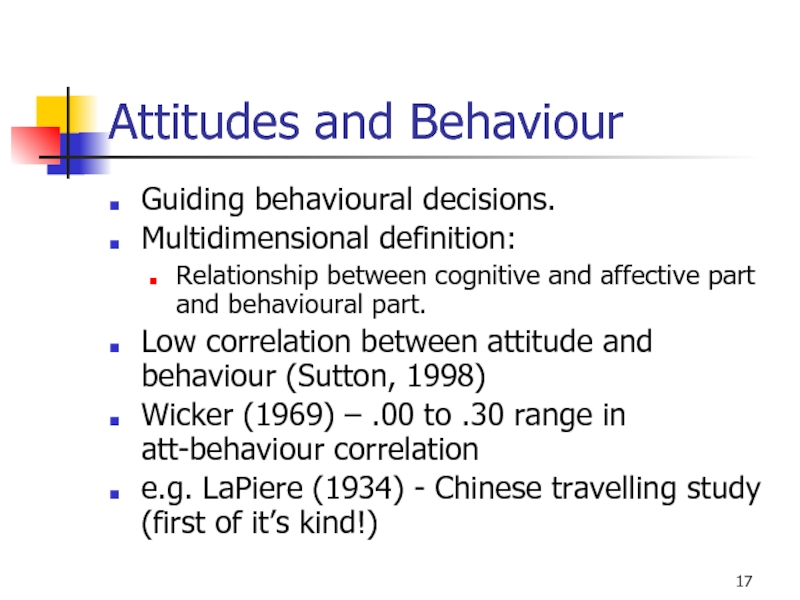
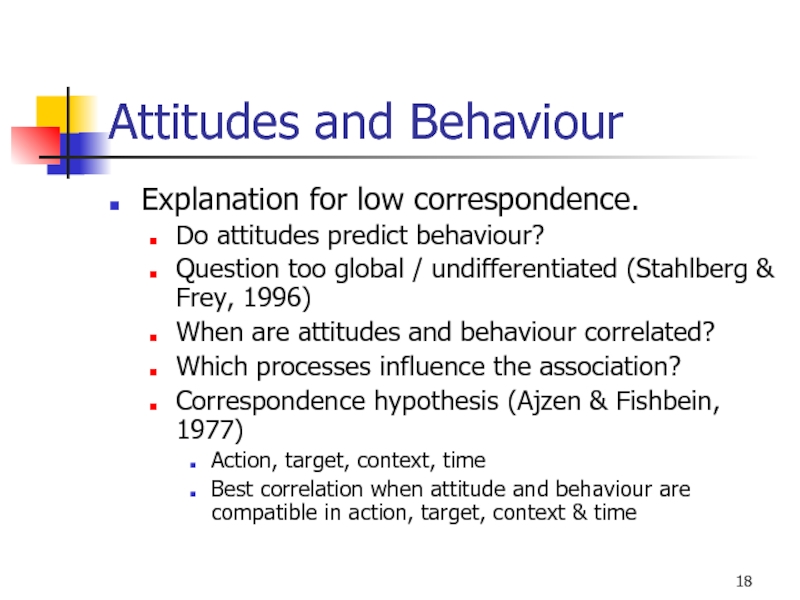
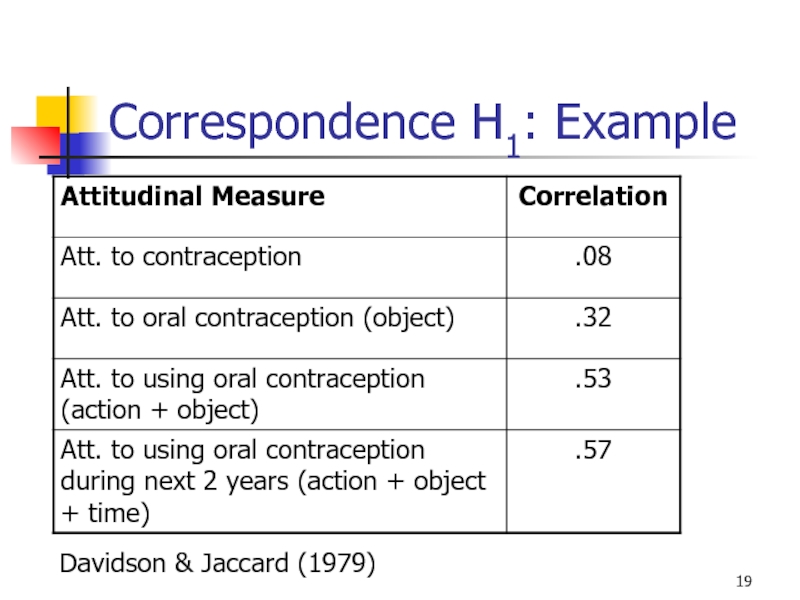
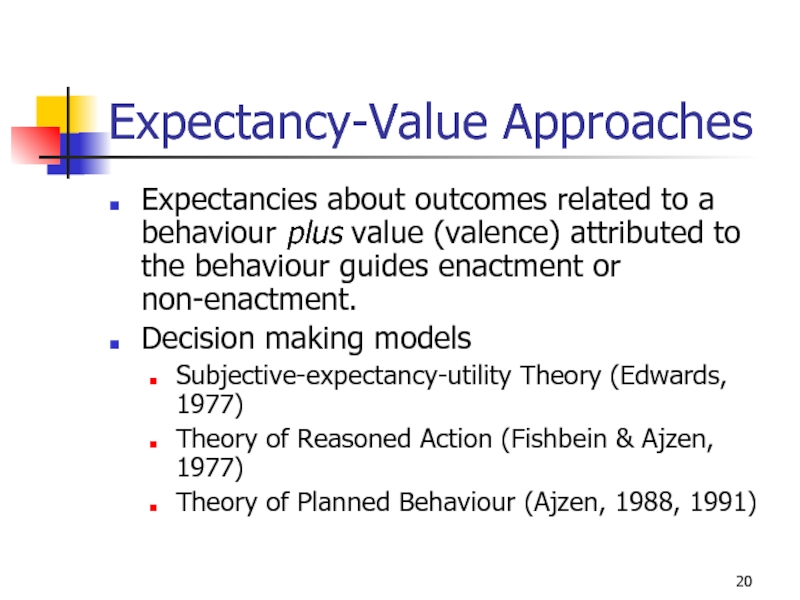
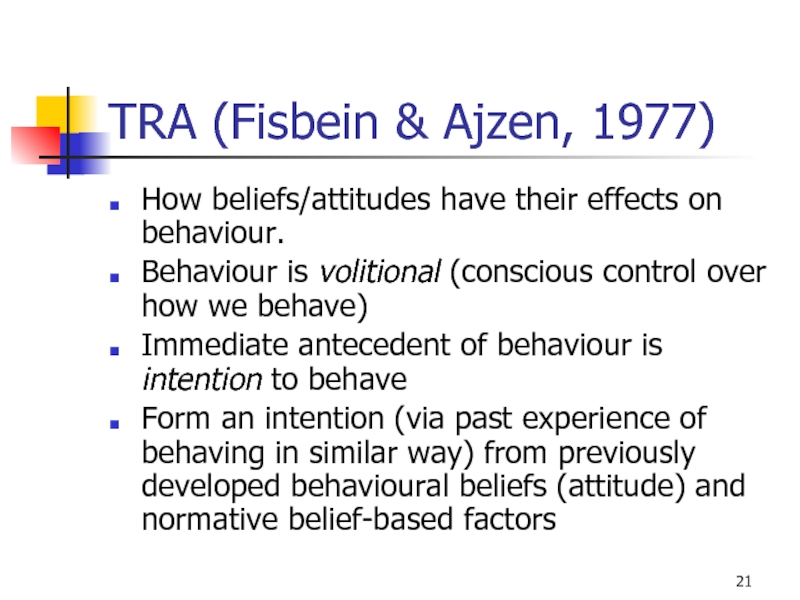
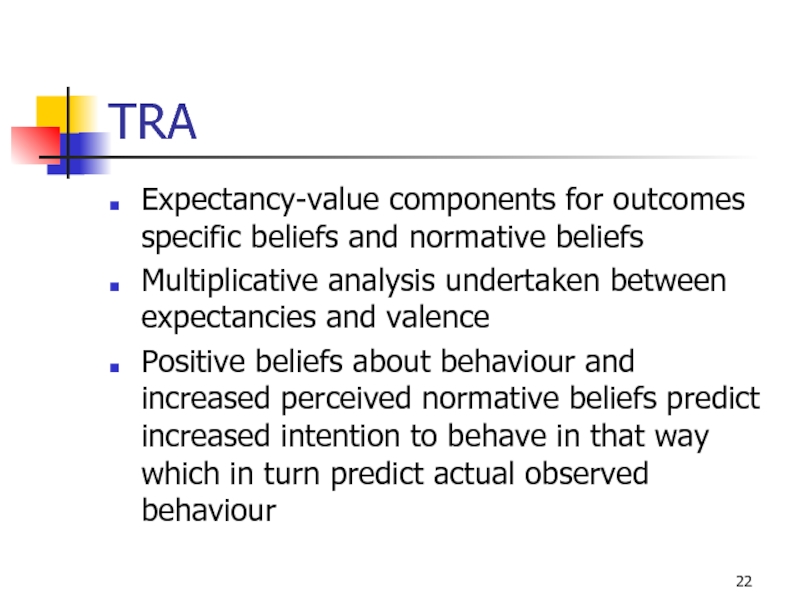
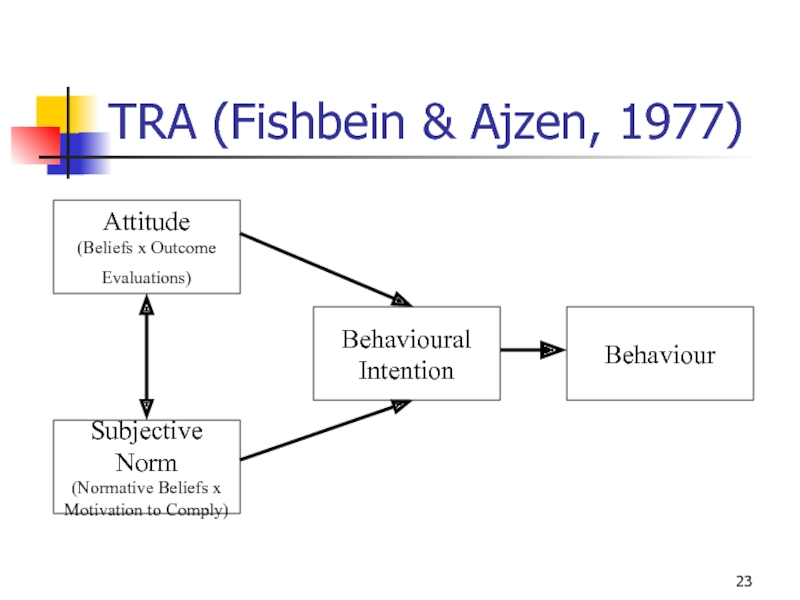
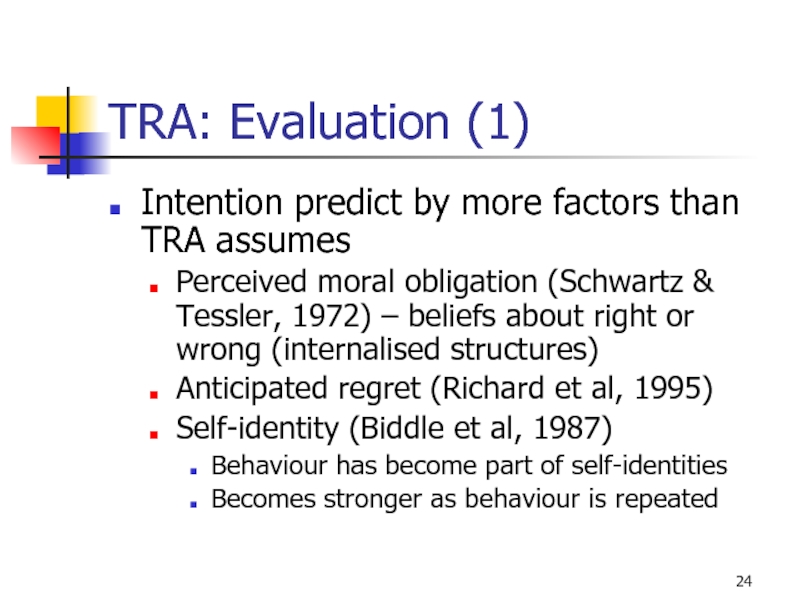
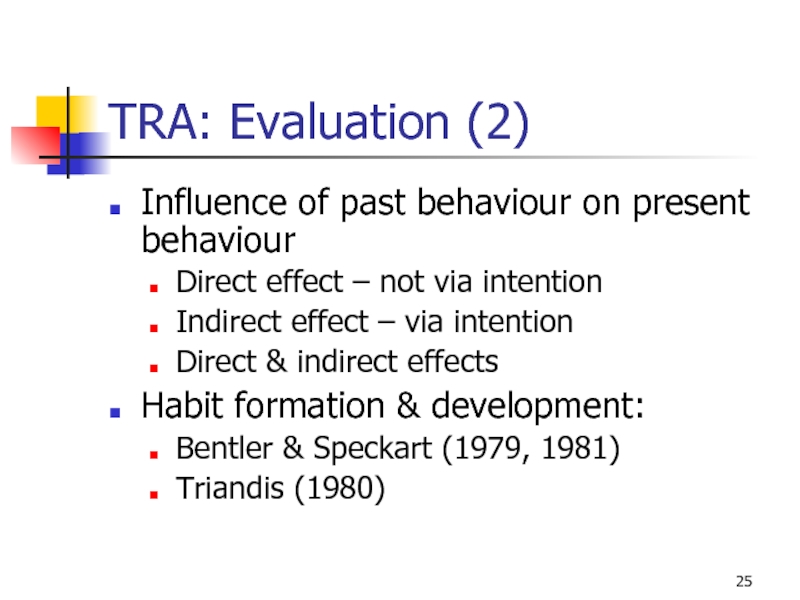
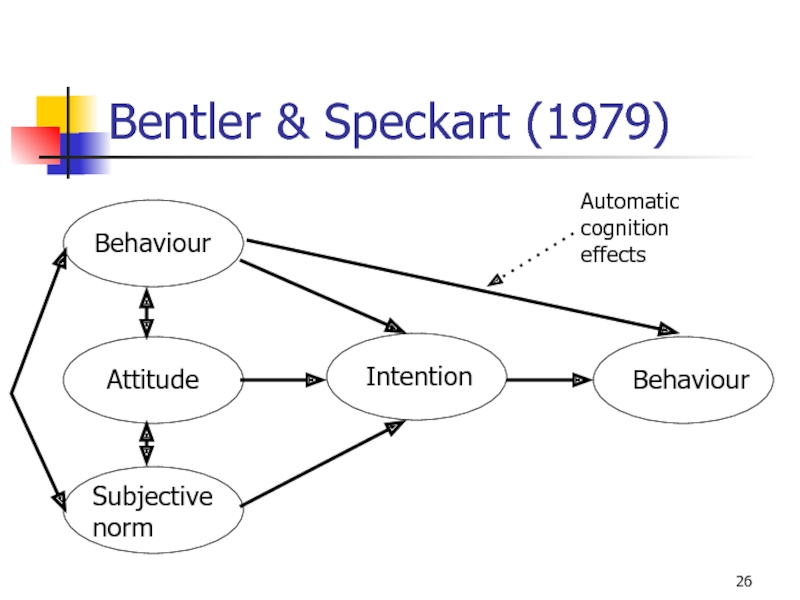
![Triandis’ (1977, 1980)Specified habit as part of the intention-behaviour relationship“[S]ituation specific sequences that are or](/img/tmb/2/109124/ed7d81f3b6598a4d32d42356e7b06ca0-800x.jpg)
